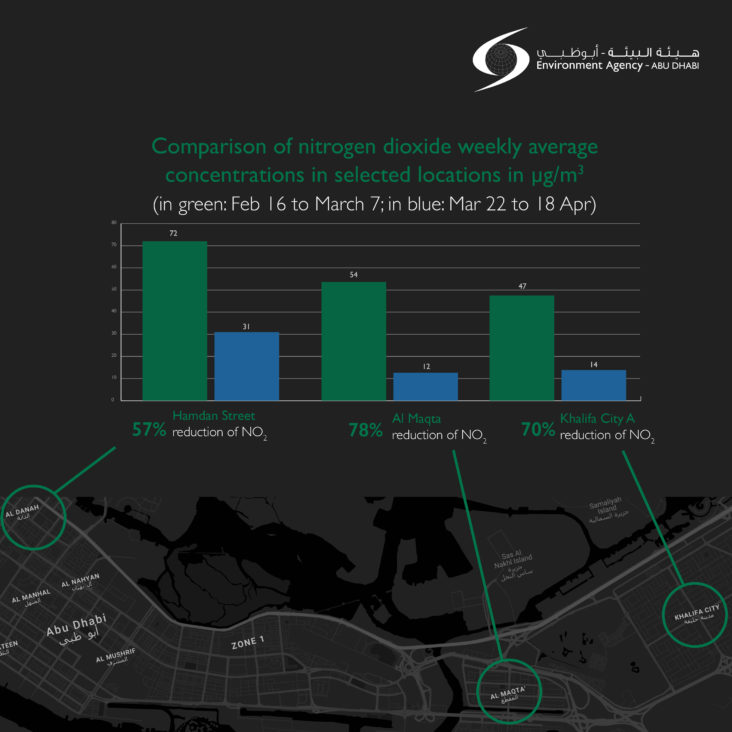Continued Air Quality Improvement In Abu Dhabi, As NO2 Emissions Fall By 26 Percent

Abu Dhabi, EAD, announced there has been a continued improvement of air quality in Abu Dhabi due to government efforts to control human and traffic movement in the capital, as part of the precautionary measures undertaken to combat Covid-19.
The agency observed that air pollutants such as nitrogen dioxide (NO2) had decreased further with a 62 percent reduction after a period of eight weeks, in comparison to a 50 percent decrease after six weeks. There was also positive figures in the levels of volatile organic compounds (VOCs) and carbon monoxide (CO) in the air.
Examples of neighbourhoods that were observed within the vicinity of Abu Dhabi included: Hamdan Street which revealed a 57 percent reduction of NO2, Al Maqta with 78 percent and Khalifa City A with a total of 70 percent.
Dr. Shaikha Salem Al Dhaheri, EAD’s Secretary General said: “Spanning a period of eight weeks, we have been monitoring air quality in Abu Dhabi and noticed a significant decrease in air pollutants which implies that limiting traffic movement has had an extremely positive effect on the environment.”
Dr Al Dhaheri added: “This trend is in line with the global improvement in air quality in several of the major cities of the world that have imposed strict regulations on movement to encourage social distancing and save lives. Wuhan was one of the first cities that revealed a notable improvement in air quality followed by other locations in Europe and the United States.”
“Within the region, several prominent organisations have also reported a drop in air pollution levels in countries across the entire GCC region.”
She also said that EAD will be collaborating with relevant partner organisations and striving to maintain the positive level of air quality in Abu Dhabi, as part of its strategic goals of creating a sustainable future for all, in alignment with the government vision of Abu Dhabi.
Through an integrated network of 20 fixed and two mobile stations, EAD is able to monitor and observe air quality in the capital. Using cutting-edge technology, the network monitors about 17 types of pollutants recognised by the International Organization for Standardization. The stations adhere to the testing and competency standards of ISO/IEC 17025. The network provides live data broadcasts that are of the highest quality of accuracy on the status of the air quality.




